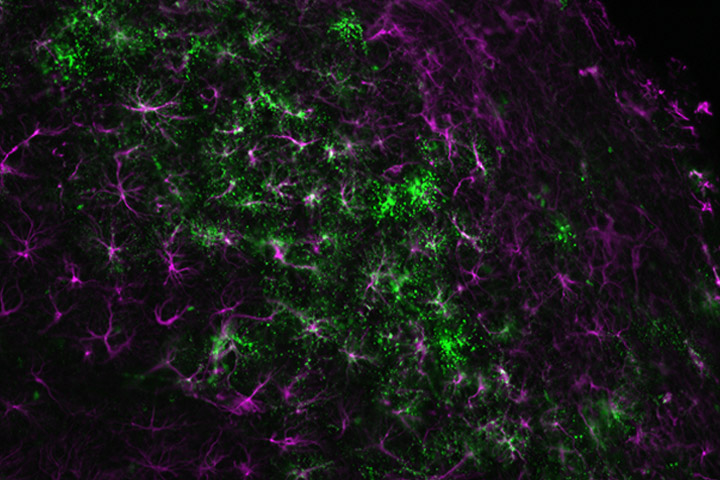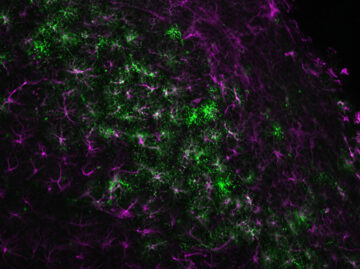
Smell to forget: how olfactory-mediated social transmission of stress impacts on cognition.
A new paper from Marsicano’s team.
How do we cognitively adapt to the emotions of others? More specifically, does our brain process emotional signals from others to modify our behavior? Thanks to a collaboration with senior co-author Jaideep Bains at the Krembil Institute funded by the University of Bordeaux IdEx “Investments for the Future” program, Paula Gomez-Sotres in the Marsicano team discovered that male mice can detect stress through scent, and this detection influences memory in a manner similar to direct exposure to stress. This cognitive adaptation is mediated by cannabinoid receptors (CB1) located in the mitochondria of astrocytes located in the olfactory bulb—the brain’s first processing center for smell. Thus, olfactory bulb astrocytic mitochondria represent an early and necessary step in the link between social olfaction, emotional contagion and behavioral consequences.

Mice copy the stress of others, but until now, evidence of such changes was limited to the synaptic level, with similar plasticity observed in both directly stressed mice and those exposed to stressed peers in specific brain regions(Lee et al., 2021; Sterley et al., 2018). However, the study of Gomez-Sotres et al(Gómez-Sotres et al., 2024), published in Nature Communications aimed at understanding how the social transmission of stress can drive behavioral adaptations. When mice interact with stressed partners, or only smell them, they show memory impairments in non-emotional cognitive tasks such as novel object and social recognition. Through a series of genetic manipulations, the authors discovered that CB1 receptors located in astrocytes of the olfactory bulb—and more specifically, in their mitochondria—are crucial for the appropriate behavioral adaptation to the stress of others. By using fiber photometry to monitor calcium dynamics within astrocytic mitochondria, they found that changes in mitochondrial calcium, controlled by mitochondrial CB1 receptors, were specifically linked to the detection of stress odor and required for the resulting cognitive adaptations.
The results of this study reveal a mechanistic link between social emotional odor communication and cognitive processing. Since major mental conditions like autism spectrum disorders present impairments in social olfaction and in cognitive, the present data might open novel conceptual frameworks to better tackle such conditions.
- Lee, I. C., Yu, T. H., Liu, W. H., & Hsu, K. Sen. (2021). Social Transmission and Buffering of Hippocampal Metaplasticity after Stress in Mice. Journal of Neuroscience, 41(6), 1317–1330. https://doi.org/10.1523/JNEUROSCI.1751-20.2020
- Sterley, T. L., Baimoukhametova, D., Füzesi, T., Zurek, A. A., Daviu, N., Rasiah, N. P., Rosenegger, D., & Bains, J. S. (2018). Social transmission and buffering of synaptic changes after stress. Nature Neuroscience, 21(3), 393–403. https://doi.org/10.1038/s41593-017-0044-6
Reference
Gómez-Sotres P., Skupio U., Dalla Tor T., Julio-Kalajzic F., Cannich A., Gisquet D., Bonilla-Del Rio I., Drago F., Puente N., Grandes P., Bellocchio L., Busquets-Garcia A., Bains J. S., & Marsicano G.
Olfactory bulb astrocytes link social transmission of stress to cognitive adaptation in male mice.
Nature Communications 2024 15:1, 15(1), 1–17.
https://doi.org/10.1038/s41467-024-51416-4
Last update 21/11/24
